Skylence was developed as a British response to the growing need for an effective bomber during the Otesk War. War demonstrated that traditional bombers were insufficient for precise strikes on highly defended targets, particularly in areas with intense anti-aircraft defenses. The aim was to create an aircraft capable of performing fast and accurate strikes on strategic targets without being exposed to high risks of being shot down. Skylence was designed to fulfill this role while maintaining flexibility in various operational conditions.
Requirements and Development
During the Otesk War, the British Air Force decided to develop a new type of bomber. It was intended to operate near enemy lines and perform strikes on sensitive military and industrial targets. The primary requirements were performance and payload capacity. The aircraft had to be strong enough to carry heavier loads, yet fast and easy to handle under challenging conditions.
The development of the aircraft was entrusted to the British company Northcote Aeronautics, which designed a unique flying wing configuration. This design promised excellent stability and the ability to carry a heavy payload, which was essential for effective bombing.
Development and Design Challenges
The first prototype of Skylence was completed in 1947. It was equipped with a turboprop engine producing 2650 kW, providing enough power to reach a maximum speed of 700 km/h. The initial design focus on performance and payload capacity was fully achieved, but during flight testing, certain issues with control, particularly at lower speeds, were identified. The absence of vertical stabilizer led to instability during maneuvers, which prompted the development of a new flight control system.
Engineers implemented a system of braking flaps on the wings, which allowed for better directional control, ensuring greater stability at various speeds. This innovative solution proved highly effective. During flight tests, it was discovered that due to its entire design, including optimal aerodynamics, the aircraft exhibited high maneuverability—an unusual trait for a bomber of its size. This agility became an advantage not only when evading anti-aircraft fire but also in limited aerial combat, where Skylence was able to use its maneuverability to defend against enemy fighters.
Design and Technology
Skylence had dimensions of 6.8 meters in length, 16 meters in wingspan, and 3 meters in height, with a weight of just under 6 tons. Its design allowed it to carry up to two 1000 lb bombs beneath the fuselage and six 300 lb bombs in the wings, making it ideal for precise strikes on well-defended targets. Additionally, it was equipped with two fixed Browning M3 machine guns, providing basic capabilities for aerial combat during evasive maneuvers or defense.
The bombardier/navigator was equipped with a binocular targeting system, which was linked to a camera system mounted beneath the fuselage. This system allowed for precise target designation, which was essential for the success of its bombing missions.
Operations and Deployment
Skylence entered service in 1951 and quickly became an invaluable asset to the British Air Force during the Otesk War. The aircraft was capable of performing rapid strikes on sensitive military and industrial targets, even in areas with heavy anti-aircraft defenses. Its ability to carry out precise attacks and then escape danger was crucial to the success of these missions.
Although agility was not originally a priority, its presence proved to be a decisive advantage that set Skylence apart from other bombers. The flight crew, consisting of a pilot and a bombardier/navigator, could carry out coordinated strikes and avoid threats thanks to the aircraft's unexpected maneuverability.
End of Service
Despite maintaining excellent maneuverability and bombing accuracy, Skylence gradually became obsolete. Although several attempts were made to modernize the aircraft, including the introduction of guided missiles for the underwing pylons, its design was no longer compatible with the demands of newer bombers equipped with advanced sensors, sophisticated missile systems, and enhanced flight characteristics. Modernization efforts were limited and did not fully resolve the challenges posed by newer technologies.
ingame controls
- To start engine - turn on all switches on the right next to pilot, then push "START" button or press A5
- A3 - bomb bay doors
- A2 - Drop large bombs
- A1 - Drop small bombs (Bomb bay need to be openned)
- VTOL - Flaps
- Trim - Trim
Specifications
Spotlights
- Rob119 5 months ago
- KPLBall 5 months ago
- dabestsock 5 months ago
General Characteristics
- Predecessor [CLOSED] Otesk war Plane challenge
- Created On Windows
- Wingspan 52.4ft (16.0m)
- Length 22.2ft (6.8m)
- Height 10.0ft (3.0m)
- Empty Weight 9,288lbs (4,213kg)
- Loaded Weight 11,946lbs (5,419kg)
Performance
- Horse Power/Weight Ratio 0.297
- Wing Loading 19.8lbs/ft2 (96.9kg/m2)
- Wing Area 602.1ft2 (55.9m2)
- Drag Points 1929
Parts
- Number of Parts 257
- Control Surfaces 6
- Performance Cost 1,631


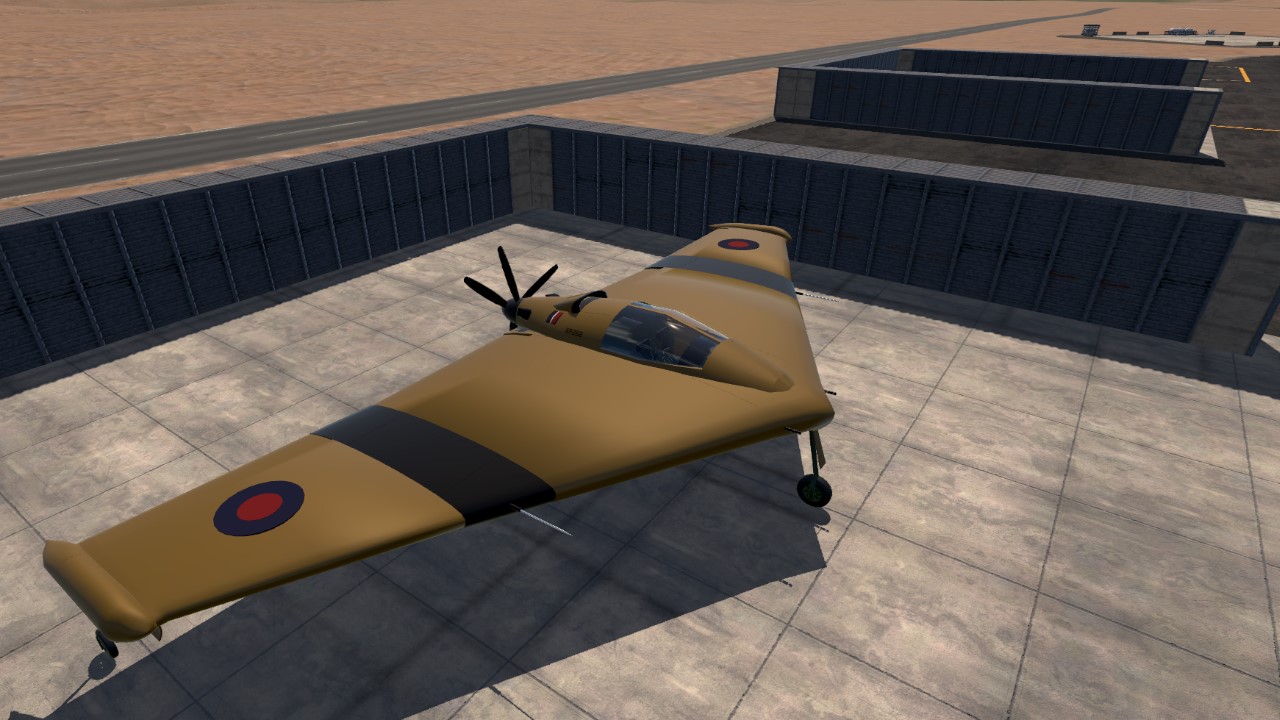
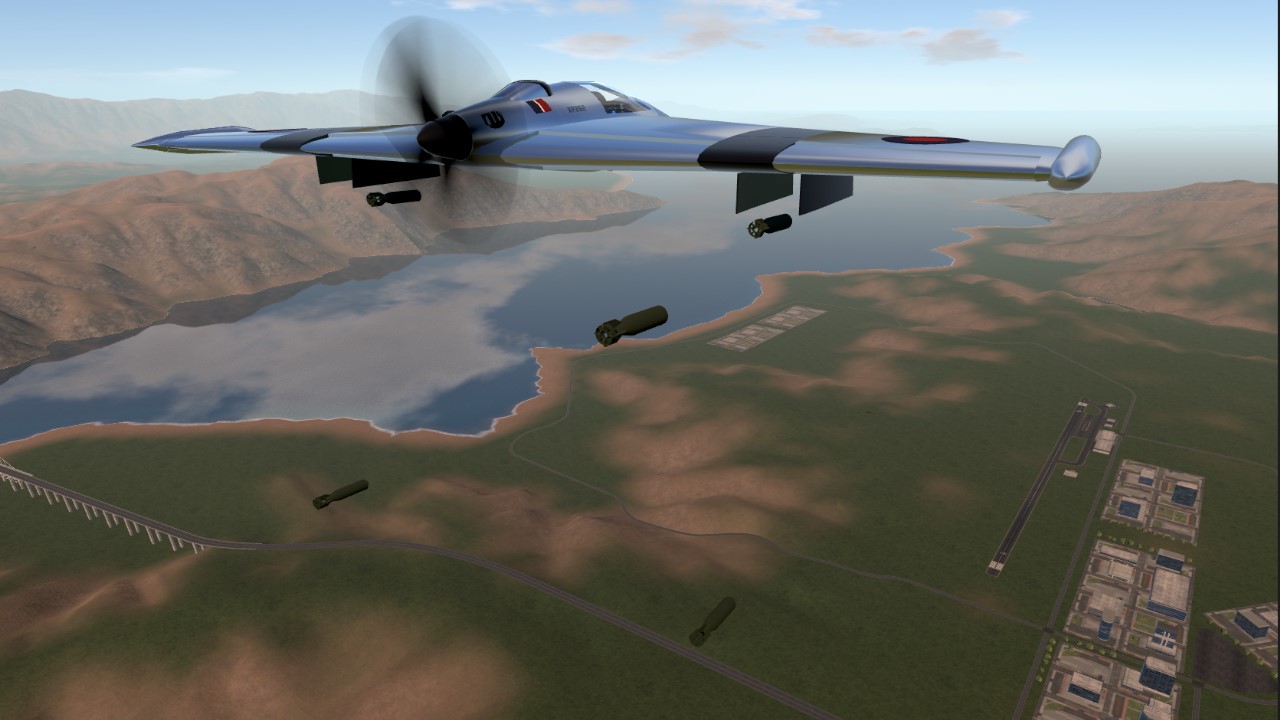
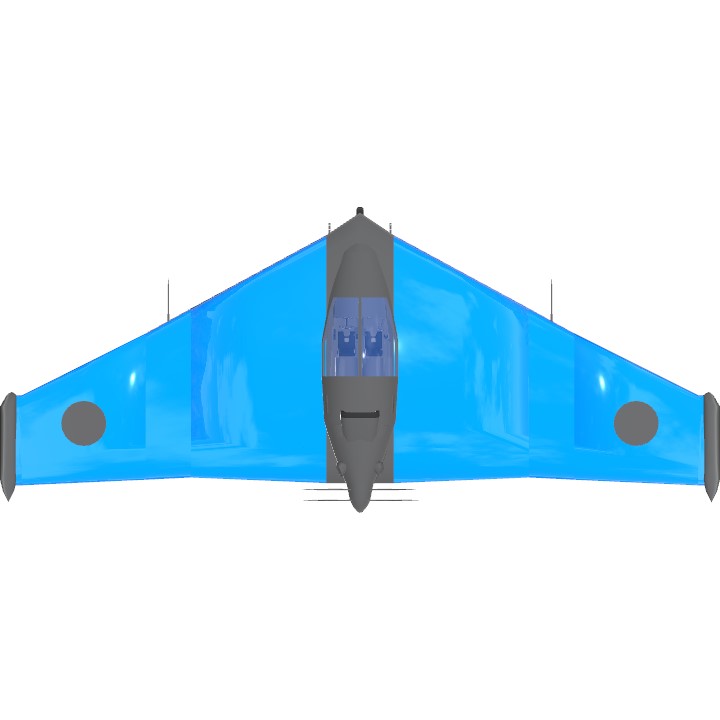
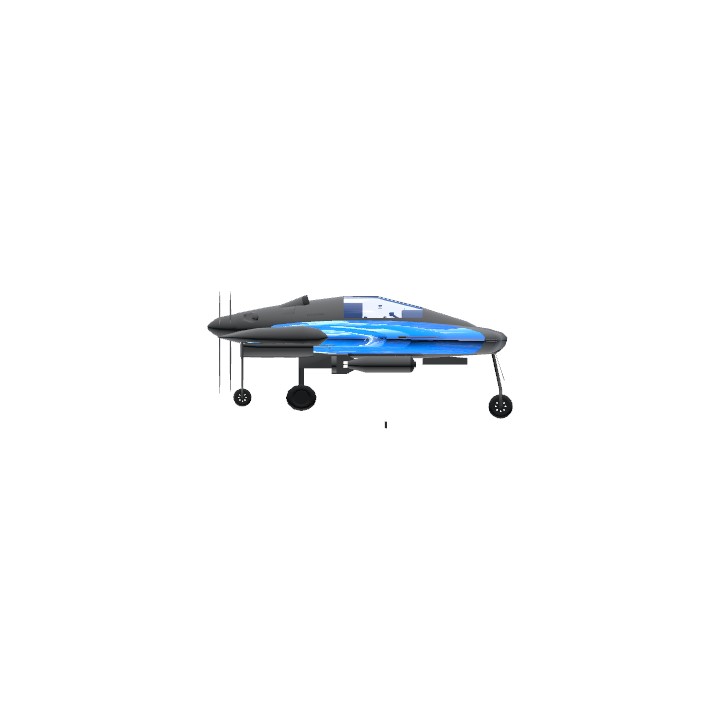
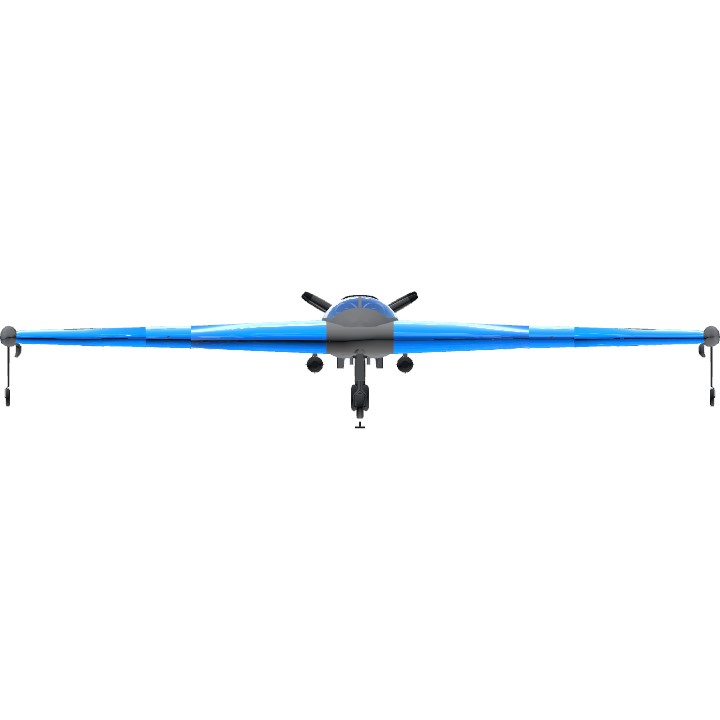
10/10 Looks
8/10 function
8/10 Relevance
8/10 Weaponry
10/10 description
10/10 Country Roundel effort
8/10 Camo effort
10/10 Interior design
10/10 Firepower
9/10 speed
5/10 Defense/armor
10/10 Manuverability
overall 106/120
Pls pin
Perfect for 1944 :D